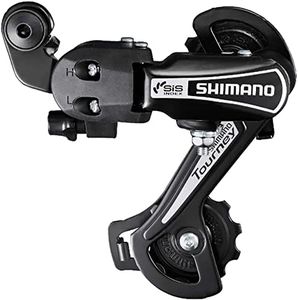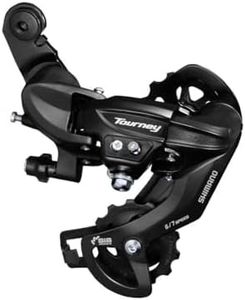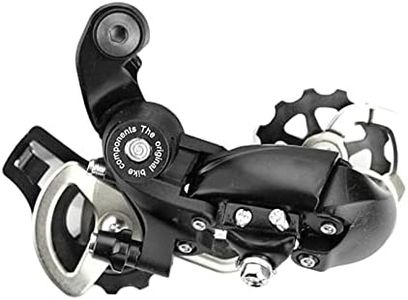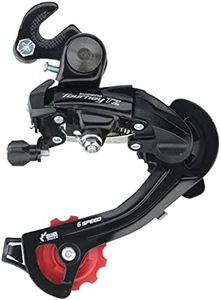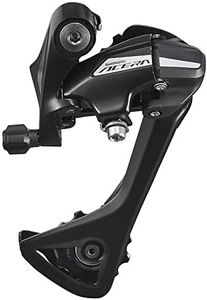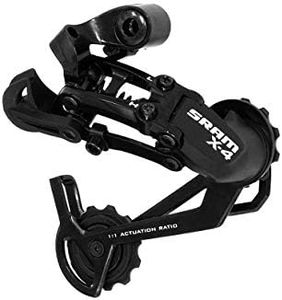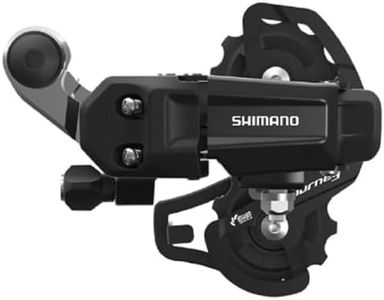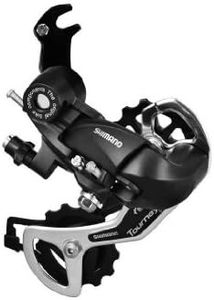We Use CookiesWe use cookies to enhance the security, performance,
functionality and for analytical and promotional activities. By continuing to browse this site you
are agreeing to our privacy policy
10 Best 7 Speed Derailleur
From leading brands and best sellers available on the web.Buying Guide for the Best 7 Speed Derailleur
When choosing a 7-speed derailleur for your bicycle, it's important to understand what a derailleur does and how the different features can impact your riding experience. A derailleur is the component that shifts the chain across the gears (or sprockets) on your bike, affecting how hard or easy it is to pedal in different situations. Picking the right derailleur ensures smooth shifting, reliable performance, and a more enjoyable ride.CompatibilityCompatibility refers to how well the derailleur works with the rest of your bike's drivetrain, including the shifters, cassette, and chain. This is important because derailleur systems are often designed to match specific numbers of gears and brands. For 7-speed systems, you need a derailleur that's specifically made for 7-speed bikes to ensure smooth and accurate shifting. When shopping, make sure the derailleur matches your bike's speed setup—the number of cogs on your rear cassette. Some derailleurs are cross-compatible with 6 or 8 speeds, but it's best to check the manufacturer's specs or ask for advice at a bike shop.
CapacityCapacity is the derailleur’s ability to handle differences in chain length as you shift between the largest and smallest chainrings and sprockets. It's measured as 'total capacity' (the difference between the largest and smallest chainrings plus the difference between the largest and smallest cassette cogs). Choose a derailleur with enough capacity for your setup: If you have a single front chainring, a lower capacity is fine. For bikes with two or three front gears, a higher capacity derailleur is necessary. Picking the right capacity prevents chain slack or derailleur overstretching.
Cage LengthThe cage is the long arm of the derailleur that guides the chain, and it comes in short, medium, or long lengths. The length determines how much chain slack the derailleur can take up. Short cages are lighter and shift a bit more crisply, suitable for single-chainring bikes or racing bikes with tight gear ranges. Medium and long cages are for bikes with wider gear ranges or multiple front chainrings, such as mountain or hybrid bikes. If your bike has only one or two gears up front and a narrow range, short or medium will work. For three front rings or a wide range, go for long cage.
Actuation RatioActuation ratio is how much the derailleur moves in response to each pull or click of the shifter. Different brands use different actuation ratios, so matching your shifter’s design and brand with the derailleur ensures smooth shifting. For most casual riders, just stick with the same brand (like Shimano or SRAM) for both shifters and derailleurs on a 7-speed setup. Mixing brands can sometimes be tricky unless you’re familiar with how the ratios work.
Mounting StyleThe mounting style determines how the derailleur attaches to your bike frame. The two main types are 'direct mount' (also called 'hanger mount') and 'clamp mount.' Most modern bikes use a direct mount that attaches to a small hanger on the frame, while older or simpler bikes may use clamp mount. Check your bike to see how your current derailleur is attached, and get the same style for hassle-free installation. Picking the wrong mounting style means the derailleur won’t fit on your bike.
Materials and DurabilityDerailleurs can be made from various materials like steel, aluminum, or lightweight composites. Steel is strong and cheap but heavier, aluminum is lighter and resists rust, and composites or high-end alloys offer good performance at a lighter weight. For most everyday riders, a basic aluminum or steel derailleur works fine, but if you want to shave some weight and ride more aggressively, a higher-end, lighter option may be worth considering. The right material is mostly about how hard you ride and how rough the conditions are.



